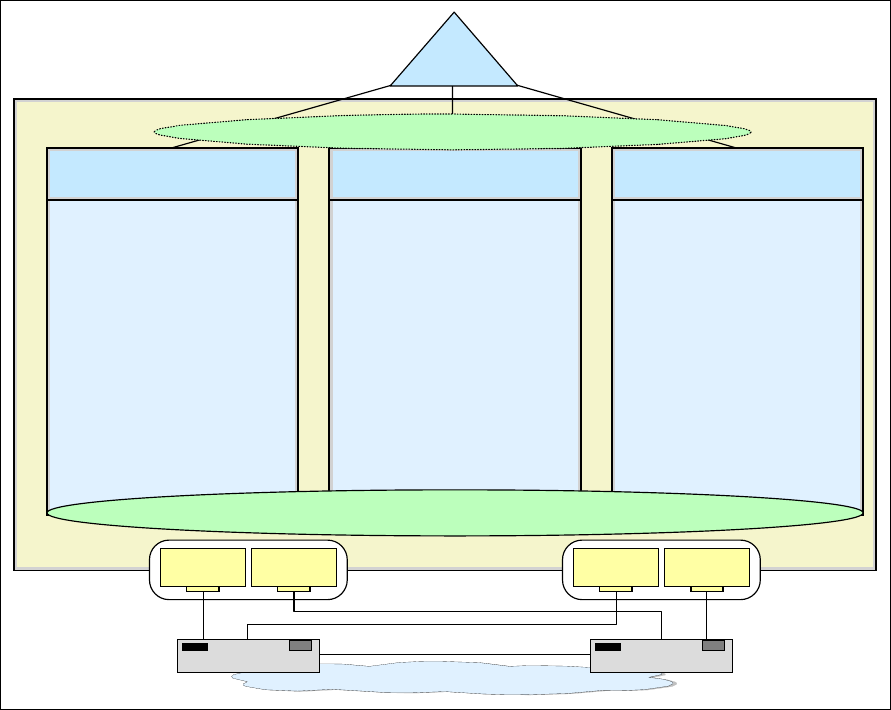Chapter 4. Connectivity 119
eliminated, along with the cost, complexity, and maintenance of the networking components
that interconnect them.
Consolidated servers that have to access corporate data residing on the System z9 or
zSeries server can do so at memory speeds, bypassing all the network overhead and delays.
HiperSockets can be customized to accommodate varying traffic sizes. (In contrast, LANs,
like Ethernet and Token Ring, have a maximum frame size predefined by their architecture.)
With HiperSockets, a maximum frame size can be defined according to the traffic
characteristics transported for each of the four possible HiperSockets.
Since there is no server-to-server traffic outside the System z9 or zSeries server, a much
higher level of network availability, security, simplicity, performance, and cost effectiveness is
achieved as compared with servers communicating across a LAN. For example:
Since HiperSockets has no external components. It provides a very secure connection.
For security purposes, servers can be connected to different HiperSockets. All security
features, like firewall filtering, are available for HiperSockets interfaces as they are with
other TCP/IP network interfaces.
HiperSockets looks like any other TCP/IP interface; therefore, it is transparent to
applications and supported operating systems.
HiperSockets can also improve TCP/IP communications within a sysplex environment
when the DYNAMICXCF is used (for example, in cases where Sysplex Distributor uses
HiperSockets within the same CEC to transfer IP packets to the target systems).
Considerations
The z/OS Communications Server does not support VLANs in conjunction with HiperSockets.
Therefore, if you have a requirement to restrict data traffic flow among the certain LPARs in
the server, we recommend that you connect those LPARs to a separate HiperSockets.
4.3.3 Dynamic XCF connectivity
The last connectivity scenario we are going to add to our test environment is to connect all
images within the same Sysplex environment through a dynamic XCF connection, created by
the DYNAMICXCF definition in the TCP/IP profile.
Once defined, DYNAMICXCF will provide connectivity between stacks under the same LPAR
by using the IUTSAMEH device (SAMEHOST) and between LPARs through HiperSockets
using a IUTiQDIO device. To connect other z/OS images or other servers, an XCF coupling
facility link is created.
In our test scenario we use DYNAMICXCF through HiperSockets with IQD CHPID F7. So by
defining the DYNAMICXCF statement, we will create the XCF subnetwork through
HiperSockets, as seen in Figure 4-10 on page 120.


